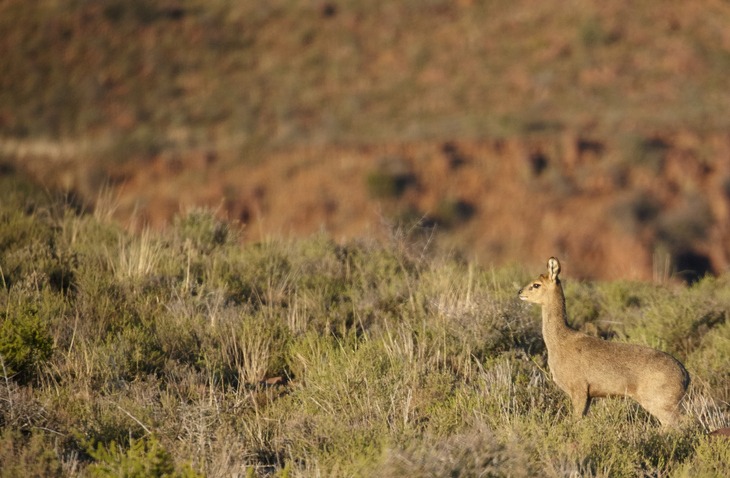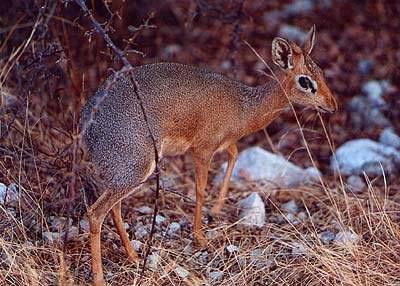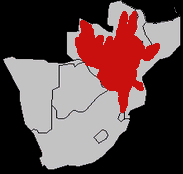It is a small, shy antelope that lives solitary during its entire life in heave bushes, except when breeding or giving birth. This antelope has a rufous coat, covered with white streaks. Wide-spaced stubby horns only occur in males. The species has a large mouth, short deep muzzle, and heavy grinding teeth.
Read further to know more about the Sharpe's Grysbok.
What is a Sharpe's Grysbok?
Sharpe's Grysbok (Raphicerus sharpei), also known as the Northern Grysok, is a small, secretive, solitary antelope that occurs from tropical to southeastern Africa. It belongs to the same family of another dwarf antelope, the Steenbok. The specie has a vast territorial range, marking it with dung middens, but is rarely seen due to their timidity,
Its seven levels of classification are as follows:
Kingdom: Animalia
Phylum: Chordata
Class: Aves
Order: Artiodactyla
Family: Bovidae
Subfamily: Antilopinae
Genus: Raphicerus
Species: R. sharpei
Sharpe's Grysbok Physical Description
Sharpe's Grysboks are small antelopes standing at an average height of 20 inches at the shoulders and weighing about 7 to 11.5 kilograms. It resembles the common duiker's size but boasts a stockier body and extended fur on its hindquarters. This antelope has a rufous coat, barred with white streaks while throat, underside, mouth, and eye rings are off-white. Only males have horns, stubby, wide-spaced, and growing vertically on the head. They have a short face and neck but a long-legged body, creating a high-rump stance when foraging.
Where can they be spotted?
Sharper's Grysboks are widespread in southeastern Africa. They occur in the Caprivi Strip in Namibia, Transvaal in South Africa, Mozambique, Botswana, Zambia, Zimbabwe, Tanzania, Malawi, and Lake Victoria. These antelopes prefer woodland regions where there are medium-length grass or low-growing scrub, which they can use as a cover for their predators, refuge for their offsprings, or shelter during the hot midday or late at night. While they can live in the rocky hill country, the species prefers fertile zones or areas with denser vegetation on the lower slopes.
Interesting Facts You Should Know About the Sharpe's Grysbok
Unlike most antelopes, the Sharpe's Grysboks do not aggregate in herds to build and live as a community. They are solitary, highly-territorial, and have a vast territorial range. Pair share the same piece of land and mark it by spreading feces and urine along the edges of their field. If needed, the males will engage in battles using their sharps, pointed horns to fight and settle disputes over their territory. Offsprings usually stay under the same range until they become independent. However, that implies that they can compete with their own young should it find a mate in the future.
Sharpe's Grysboks are nocturnal, wandering and foraging at night for buds, leaves, herb, and fruits while spending the day resting in thickets. Whenever they are placed in antagonistic encounters, their first reaction is to hide away from predators. Otherwise, they will seek refuge in burrows made by other mammals or crouch on the ground. These antelope will only run should the predator comes very close. Should they be forced to flee, Sharpe's Grysboks will stay low as possible and go area with denser shrubs, resulting in lesser visibility from predators and, eventually, losing their trail.
Breeding happens annually anytime throughout the year, but births usually peak during the onset of the rainy season. Like the steenboks, their courtship antics include rubbing and leg-lifting rituals before mating. The female will gestate for about 5.6 to 7 months before giving birth to 1 to 2 offsprings. Juveniles will reach sexual maturity at around 6 to 19 months of age.
Sharpe's Grysboks don't face any significant threat to their number, aside from being occasionally hunted for their meat. Their population size is stable and estimated to be at around 95,000 individuals. The species is currently evaluated as Least Concern (LC) under the IUCN Red List.
WILDLIFE PARKS AND RESERVES WHERE THIS SPECIES IS FOUND:
SOUTH AFRICA
Kruger National Park



